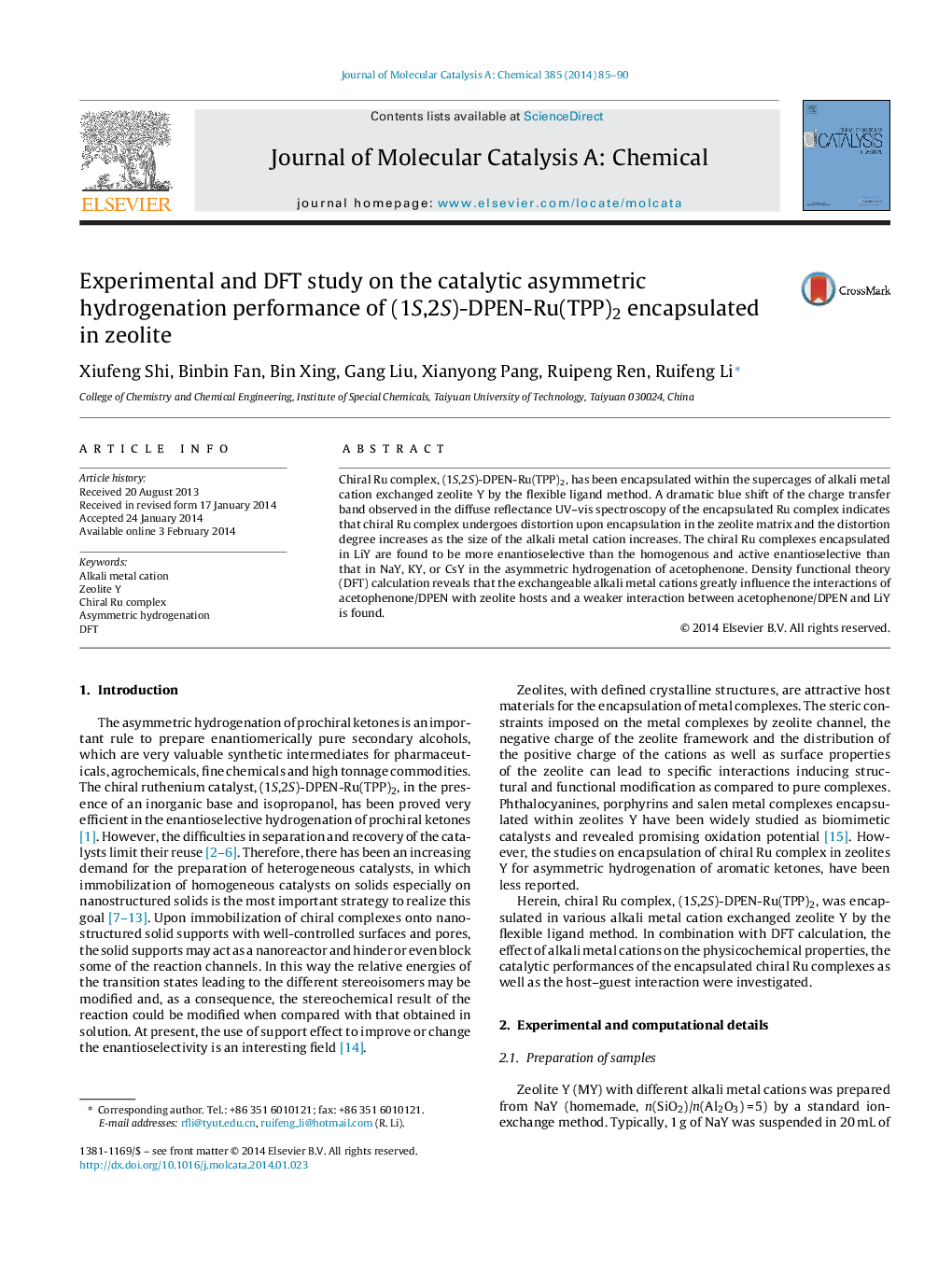| Article ID | Journal | Published Year | Pages | File Type |
|---|---|---|---|---|
| 65725 | Journal of Molecular Catalysis A: Chemical | 2014 | 6 Pages |
•Asymmetric chiral Ru(II) complexes were encapsulated in zeolite MY.•The complex encapsulated in LiY has higher ee selectivity than the homogenous.•The alkali metal cation exchanged Y has different host effect to the complex.•The reactivity was supported by DFT calculation and UV–vis spectra ananlysis.
Chiral Ru complex, (1S,2S)-DPEN-Ru(TPP)2, has been encapsulated within the supercages of alkali metal cation exchanged zeolite Y by the flexible ligand method. A dramatic blue shift of the charge transfer band observed in the diffuse reflectance UV–vis spectroscopy of the encapsulated Ru complex indicates that chiral Ru complex undergoes distortion upon encapsulation in the zeolite matrix and the distortion degree increases as the size of the alkali metal cation increases. The chiral Ru complexes encapsulated in LiY are found to be more enantioselective than the homogenous and active enantioselective than that in NaY, KY, or CsY in the asymmetric hydrogenation of acetophenone. Density functional theory (DFT) calculation reveals that the exchangeable alkali metal cations greatly influence the interactions of acetophenone/DPEN with zeolite hosts and a weaker interaction between acetophenone/DPEN and LiY is found.
Graphical abstractFigure optionsDownload full-size imageDownload high-quality image (184 K)Download as PowerPoint slide
